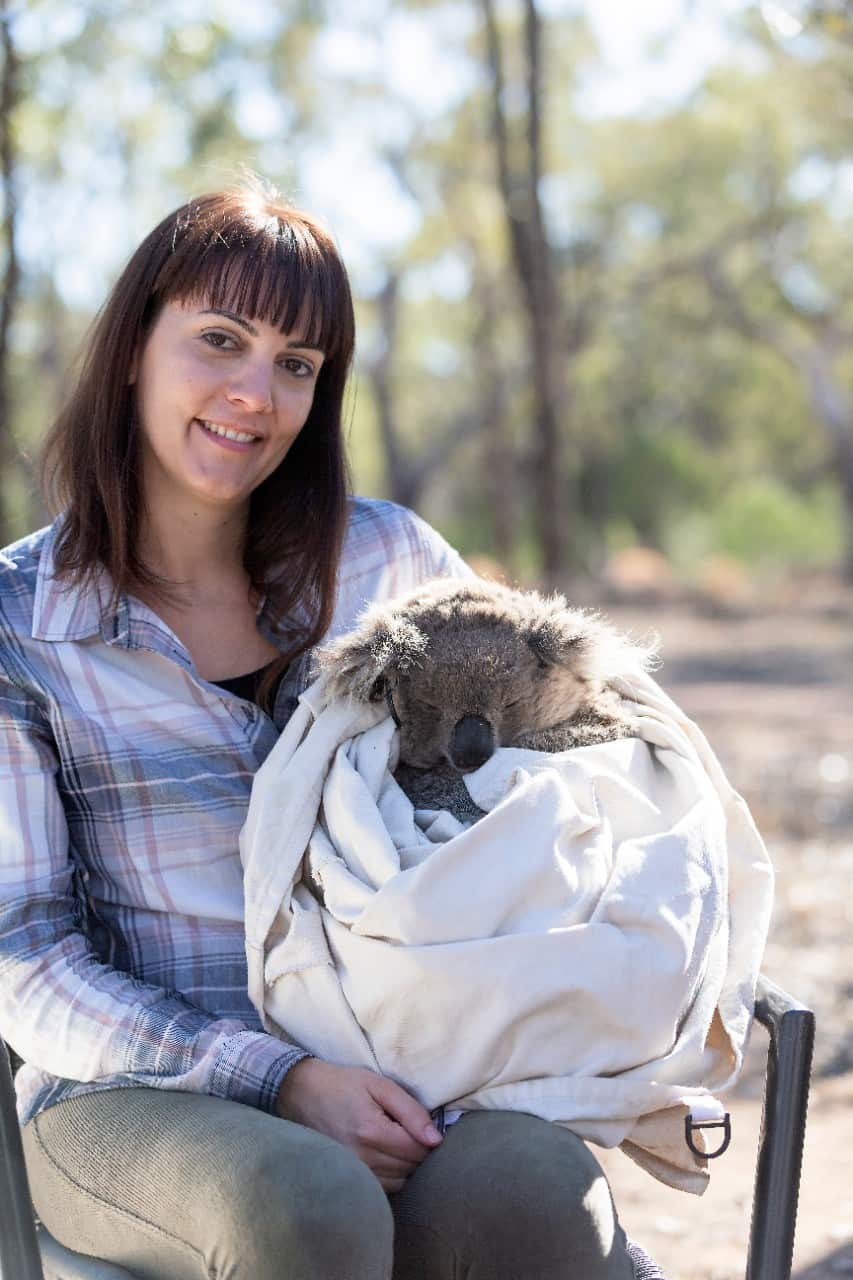As bushfires burn across Australia, images are emerging of koalas drinking water directly from human water bottles and hoses - prompting researchers to call for a roll-out of drinking stations to keep the marsupials hydrated.
"Koala" was historically believed to be a word meaning "no drink" or "no water", because it was initially believed by scientists that koalas got all the moisture they needed from the eucalyptus leaves they eat.
While koalas get the bulk of their water from eucalyptus leaves, worsening conditions have left the water content of the leaves significantly reduced – forcing koalas to seek additional sources of hydration. University of Sydney postdoctoral research associate Dr Valentina Mella said that lack of water is resulting in koalas dying at faster rates.
University of Sydney postdoctoral research associate Dr Valentina Mella said that lack of water is resulting in koalas dying at faster rates.

A CFS volunteer gives a koala a drink of water from a bottle, as firefighters battle the Cudlee Creek, South Australia, bushfire. Source: CFS
The koala expert said many animals “were literally dropping out of trees".
"No water means they can’t function properly," she said.
Dr Mella said koalas rely on trees for everything, meaning fire damage and drought has a major effect on their lifestyle.
“They sleep in trees, they feed on trees and they don’t build a nest – so that’s their home. And as you can imagine, trees are very affected by drought, especially eucalyptus trees," she said.
“The problem with this situation is that we are going through such a harsh climate with severe heatwaves and severe drought that the bush is like fuel at the moment… There’s nothing that can survive that. It’s not just koalas it’s everything else. And of course, if the trees go, then the koalas go.” Between 1990 and 2010, Koala populations across New South Wales and Queensland declined by 42 per cent.
Between 1990 and 2010, Koala populations across New South Wales and Queensland declined by 42 per cent.

Dr Valentina Mella with koala joey in Gunnedah. Source: The University of Sydney
Australia’s Environment Minister Sussan Ley, recently .
But, Dr Mella has found a solution to help thirsty koalas stay hydrated during the extreme weather conditions.
As a part of her research, she began implementing koala drinking stations across the western NSW region of Gunnedah to see if the koalas would drink water directly from a source.
In the first 12 months of the study, the research team recorded 605 visits to 10 pairs of water stations, with 401 of these visits resulting in koalas drinking.
This research suggested koalas will regularly use artificial water stations, through every season of the year and particularly in times of drought or heatwave, which was previously not believed to be the case.
Once this was found to be the case, Adelaide's Campbelltown Council began installing drinking stations for koalas.
Dr Mella said the government should provide compensation to implement drinking stations for koalas across the nation.
“Because the water stations need to be maintained, there needs to be some sort of government action that supports either landowners … or in national parks, where we know that the koalas need water," she said.
Dr Mella and her team have also developed drinking stations that are inaccessible to ground-based predators to mitigate the risk of feral animals and predators attacking koalas as they go to drink.

